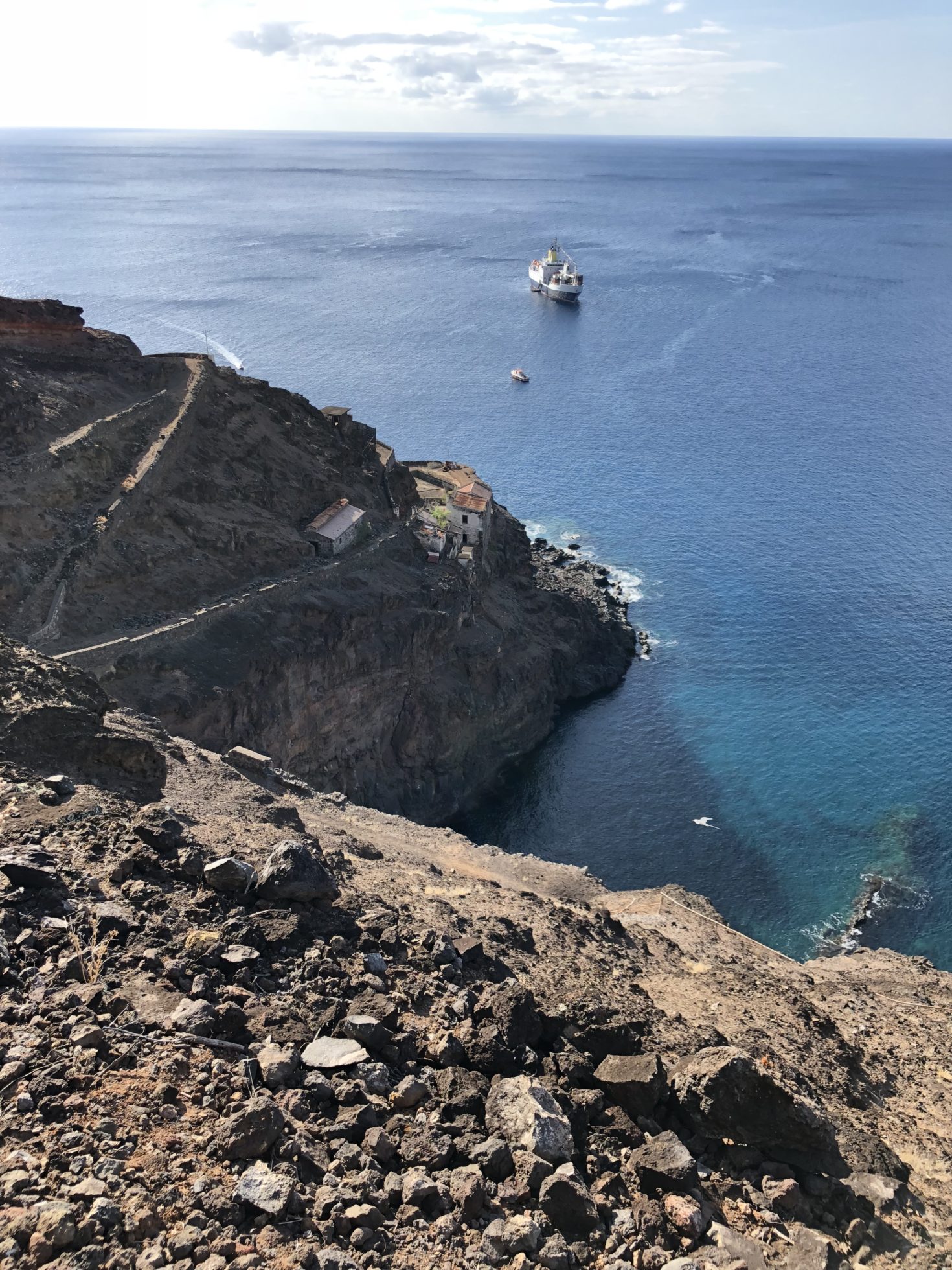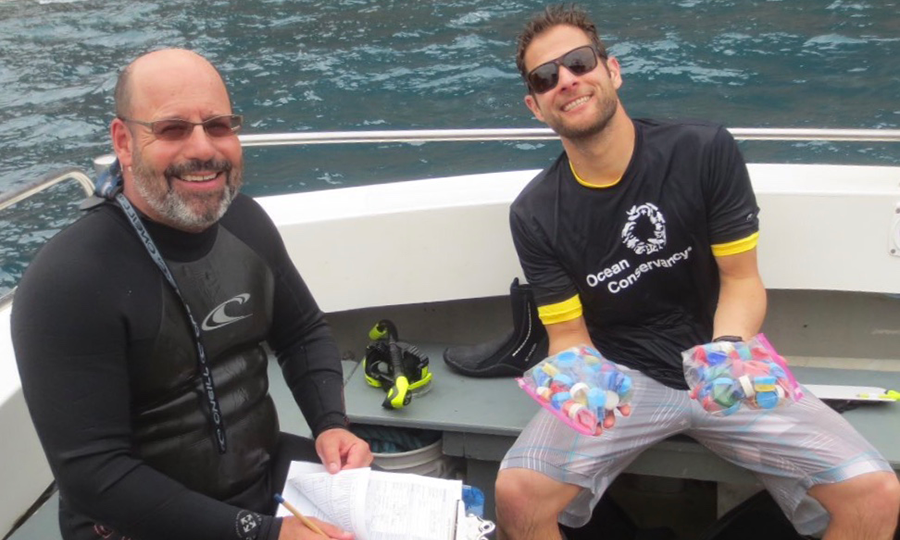St. Helena: A First Look at What We Learned About Ocean Plastics
Published by Ocean Conservancy
We touchdown on a narrow, deserted airstrip in Namibia after a two-hour flight from Johannesburg, South Africa. It has been nearly two days and Nick Mallos and I are still in route to St. Helena, one of the world’s most remote islands. We wait on the tarmac, refueling for our final journey out over the Atlantic Ocean to the island.
Beside me an elderly gentlemen with a shock of white hair, likely from somewhere in Europe, reads “St. Helena: A maritime history.” He is one of 100 people on our full plane, all of us visiting the island. The government of St. Helena has plans for as many as 30,000 tourists to visit in the future, with direct access for the first time provided by South African Airlines Airlink via a new airstrip built into the side of the volcanic island.


As we reach cruising altitude once again, I review a range of documents produced by St. Helena’s Environment and Natural Resources Directorate on its strategy to deal with waste management in the face of this development. Officials are taking this seriously, for without a change in practice, it is likely that the one landfill on the island at Horse Point will reach capacity within eight years. Plans are in place to prioritize the minimization of waste and to expand recycling of items like glass, cardboard and tin cans. Half of the total waste currently sent to the landfill is kitchen waste, suggesting that great gains can be made by developing a whole-island approach to composting. But plastics and other materials with low economic value still make up a good 20% of the waste stream by weight, and likely more when assessed by volume. One of our goals for our week on the island is to learn from local officials about how they will ensure that the pace and scale of tourism development on the island can be consistent with the island’s incredibly natural biodiversity—both above and below the waves—and maintain the cultural heritage of the local community of ‘Saints.’


Nick and I are now back in the United States and over the next few weeks will present what we have learned from this field expedition. Beyond understanding the government’s progressive approach to waste management, we have quantitatively surveyed ten of the island’s beaches for evidence of plastics and other marine debris, providing insights into how the island is at the end of the line of the globe’s use and misuse of single use plastics and other materials. We had the good fortune to join Dr. Al Dove and his team of researchers from the Georgia Aquarium to also study whale sharks in the nearshore, crystal clear waters. Scientists believe these incredible creatures—and other marine wildlife that filter huge volumes of seawater—may be at risk from the plethora of microplastic particles that are now present in the world’s oceans. To date, no one has evaluated this issue among the population of whale sharks that call St. Helena home. And there are stories to be told of the amazing people we have met during our journey; dedicated government researchers working to understand and protect the natural wonders of this special place, researchers from around the South Atlantic who came to the island for the first international conference on the diverse island environments of this region, and Al Dove and his team of researchers and graduate students seeking to uncover the mysteries of the island’s whale sharks.
Come join us! We hope you enjoy our series on St. Helena as it unfolds over the next month.


The post St. Helena: A First Look at What We Learned About Ocean Plastics appeared first on Ocean Conservancy.
Read the full article at: https://oceanconservancy.org/blog/2018/02/20/st-helena-first-look-learned-ocean-plastics/



